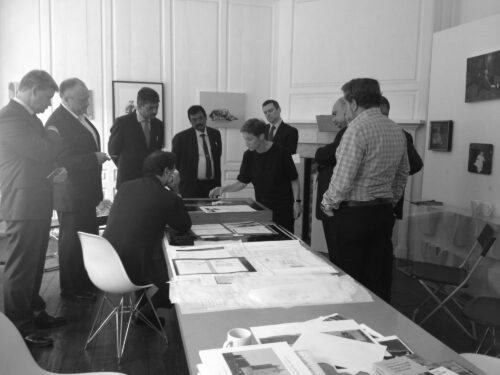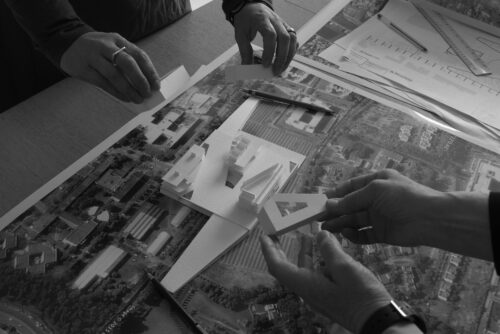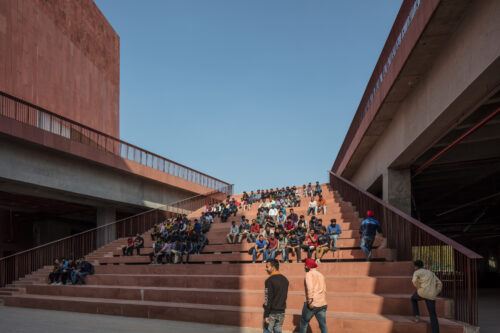Looking East - Campus as Laboratory A presentation by Rajeev Vederah, Chancellor, Thapar Institute of Engineering & Technology, as part of "Aerial - Symposium celebrating Niall McCullough: architect, writer, thinker" on 4th November 2022 at the Provost's House, Trinity College, Dublin.
Good evening, I’m Rajeev Vederah, Chairman of the Thapar University in Patiala, speaking to all of you on this day when we are remembering our friend, Niall.
In the year 2015, we decided to contemporise Thapar University, established in 1956, and needing a quantum leap in its educational programme. We entered into a strategic understanding with Trinity College Dublin for a contemporisation programme, and that entailed a very extensive multi-dimensional cooperation. In our case, being a private university, the source of practically all revenue was through the fees and it was quite apparent to me, as Chairman of the Board, that unless we increased student numbers we would not be able to achieve our objectives, and would not be able to achieve the resources required for doing this contemporisation programme. So it was decided that over two five year phases, we would take the existing strength of students from 5,000 to 10,000, and then from 10,000 to 15,000. Of course this necessitated a huge development programme, which not only called for expansion and modernisation in our academic infrastructure, but also increasing the number of student residencies. At Patiala, where the university is located, we have almost 85% of students staying on the campus. So during various visits which I, along with my colleagues, made to Dublin, we were introduced to McCullough Mulvin, an architectural firm which was run by the husband-and-wife pair, Niall and Valerie.
Over a series of discussions, Niall demonstrated to us how the built environment played such an important role in the development of the campus life, and how it could leave a lasting impression on students and staff. He was able to balance the challenge of how best to modernise, and yet maintain our whole cultural identity. He designed in harmony with the climate, culture and the traditions of India. His designs for our project at Patiala bridged the gap between modern architecture and traditional Indian architecture. In both the academic spaces, as well as student residences, both Niall and Valerie demonstrated to us how spaces for students played an important part in encouraging interactive activities. I’m happy to say that the effort of Niall and Valerie have established some of the academic and residential buildings as some of the leading structures in the world. Our library has been judged in the top twenty-six libraries of the world, and particularly in Ireland, some of the academic infrastructure has won first prize in architectural awards. So for that, I am extremely grateful both to Niall and, of course, his partner, Valerie.
As a person, Niall was always extremely warm and approachable. I remember during a visit to Dublin with my wife and daughter, Niall and Valerie went out of their way to show us downtown Dublin, take us on a walk around the pubs, and pointed out the nuances of Irish architecture. We were invited one evening to their home for a meal, which, Niall and Valerie took pains to make a fusion of Irish and Indian cuisine, which we ate heartily over a World Cup football match which was playing in the background.
Niall was with us in India a couple of times, and I did observe his discomfort of flying. I remember that he was prepared to take a 36hr train journey to visit Pune, instead of a flight which could have taken him there in two hours.
I dearly miss my friend, Niall. It is very unfortunate that he is not amongst us. But he has left a permanent footprint in our institution and will be remembered forever.
Niall, we miss you, and I hope somewhere you are listening to this tribute I am paying to you.
Thank you.
—Rajeev Vederah, Chancellor, Thapar Institute of Engineering & Technology, Punjab, India






